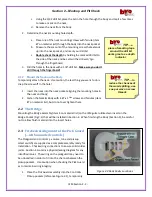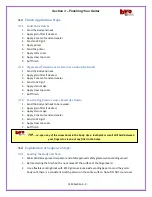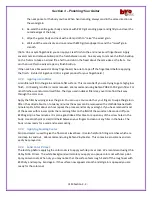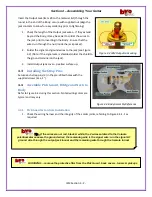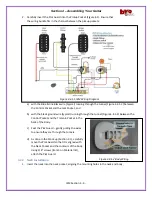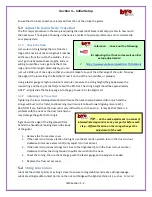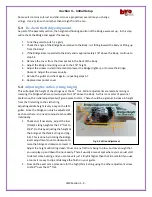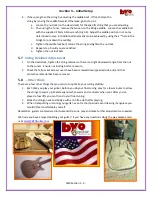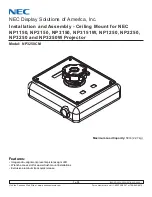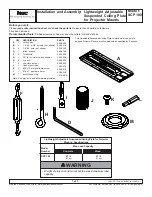
Section 5
– Initial Setup
JEM Section 5
- 2 -
Ensure that the locks (3 each) are removed from the nut then tune the guitar.
5.1
Adjust the Guitar Neck: Truss Rod
The first major procedure in the setup is adjusting the neck relief. Neck relief simply refers to how much
the neck bows. The degree of bowing in the neck is a matter of personal preference and is correlated to
your playing style.
5.1.1
Check the Neck
Get a ruler or straightedge that is at least as
long as the neck, but not so long that it reaches
all the way from the nut to the saddles. If you
can’t get one between these lengths, and are
willing to sacrifice a ruler, get one that’s too
long and cut it to length. Alternatively, you can
just cut a little out of one edge so that you can still make full use of the other edge of the ruler. Now lay
the edge of the ruler along the frets (don’t rest it on top of the nut, saddles, or pickups).
Using a feeler gauge or high resolution metal ruler, measure the string height (the gap between the
ruler/string and the top of the fret) at about the 8th fret. The string height should be approximately
0.012” - simply slide the feeler gauge into the gap to see if it is too big/small.
5.1.2
Adjusting the Truss Rod
Tightening the truss rod adjustment bolt will cause the neck to warp backward (too much and the
strings will buzz on the frets), and loosening it will cause it to bow forward (giving more relief.).
CAUTION: If you find that the truss rod is very difficult to turn, then stop. It may be that there is a
problem with the neck or the truss rod and you
may damage the guitar by forcing it.
Sight down the edge of the fingerboard from
behind the headstock, looking toward the body
of the guitar.
1.
Remove the Truss access cover.
2.
If the neck is too concave (action too high), use the 4mm Allen wrench to turn the truss rod nut
clockwise to remove excess relief (only adjust ¼ turn at a time).
3.
If the neck is too convex (strings too close to the fingerboard), turn the truss rod nut counter-
clockwise to allow the string tension to pull more relief into the neck.
4.
Check the tuning, then re-check the gap with the feeler gauge and re-adjust as needed.
5.
Replace the Truss access cover.
5.2
String Lubrication
Lubricate the contact points of a string's travel to ensure tuning stability and reduce string breakage.
Lubricate string/saddle contact points on the nut and bridge with a light machine oil (…such as 3-in-1 oil
reference:
…check out the following
for adjusting the Truss rod as well as other
setup adjustments:
https://www.youtube.com/watch?v=YN7qF6JLoIc
TIP…
do the neck adjustment in a series of
intermediate steps and re-tune your guitar before each
step
–
different tension on the strings changes the
adjustment of the neck

